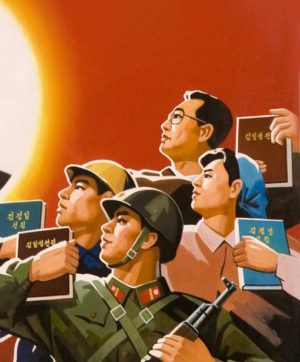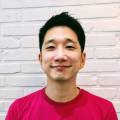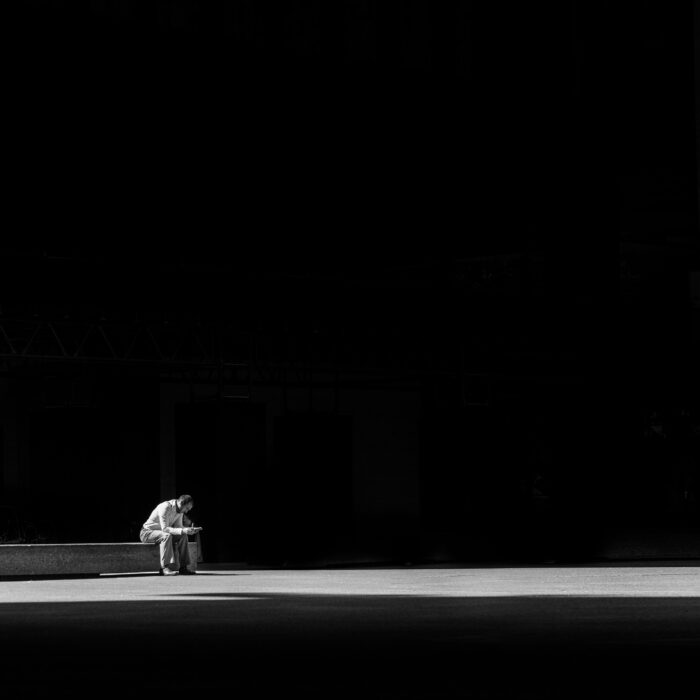You have no items in your cart. Want to get some nice things?
Go shopping
Introduction
What if I told you that one of the first works of modern Korean fiction was a queer short story?
But surely, you might say, queer Koreans don’t exist, much less queer Korean literature. (Yes, people have said that to my face.) The Korean queer literature database project at Rainbow Bookmark lists approximately 300 literary works by both queer and non-queer artists that deal directly with queer themes. Directly as in, you don’t have to bring out your graduate school copy of Eve Kosofsky Sedgwick to create “queer readings” of the work; if we add those in, the number would be so high that it may spontaneously create a black hole and suck the entirety of Korean literature into itself.
“Is It Love” by Yi Kwang-su, published in 1909, is clearly a work of queer fiction. Just in case we didn’t get it the first time, Yi repeats the theme in his follow-up publication “Yun Kwang-ho” where a hapless male Korean yuhakseng is clearly in love with a man to the point of the narrator spelling it out for the reader in the last sentence—Reader, he was a man.[1]
I won’t detail the plot of “Is It Love” for you—it’s not exactly Sarah Waters, whose literary rollercoaster Fingersmith was recently adapted into the Korean queer film The Handmaiden that’s set around the same time and place—but we need to talk about the story itself because it provides a blueprint or writing manual of sorts for not only ALL MODERN KOREAN LITERATURE, but also the big little subset we call Korean queer lit.
1. Misery! Misery!
I used to joke that the two great themes of Korean literature were: 1) I had a miserable childhood, and 2) I’m having a miserable adulthood.
The ubiquitous misery in Korean literature is more complex than it seems; I subscribe to the theory that han, supposedly a special Korean brand of sadness and sorrow (much like hygge but depressing), is a colonial invention perpetuated to demoralize the natives. All the same, there does seem to be a preponderance of tragedy in gay literature, such as the protagonist in “Is It Love” laying himself down on railroad tracks when he thinks his lover thinks he doesn’t love him enough (there is no typo in this sentence) and “Yun Kwang-ho” stabbing himself to death when his same-sex love interest rejects him.
Misery is arguably a repeating theme in Korean queer lit. Taking some random samples from the Rainbow Bookmark database: Elephant Mask by Noh Yuda is an autobiographical novel of a young lesbian who is sexually assaulted and suffers from bipolar disorder. Partial Deletion of Loving Memories by Hwang Insu features faulty penile augmentation, sexually exploited senior citizens, suicide, and the fear of needles. Kim Keum Hee’s “Waiting for the Dog” features a lesbian who loses her dog.
Along this cheerful vein, a meteor strike in Jeon Sam-hye’s “Genesis” kills everyone on Earth, leaving the lesbian protagonist all alone on the Moon. I found this story extremely easy to translate, and the author told me why in a subsequent interview: she had written it with translation in mind, recalling the sentences that she had absorbed through foreign science fiction translated into Korean. It was basically an English-language story that she “retranslated” into Korean, for the purposes of which is discussed as follows.
2. Write in Translationese
As of this writing, the poor dears of the world who cannot read in Japanese, Chinese, or Korean have not been graced with Haruki Murakami’s The Novelist as a Profession, so let me share one of the anecdotes therein. Murakami, when he began writing seriously, did not discover his voice until he began writing in English and retranslating his writing into Japanese. Fascinated by the resulting English-Japanese translationese, he decided to make it his distinctive style, which partially explains both his lack of popularity among Japanese purists (he never did win the Akutagawa Prize) and his massive success in the English-language world.
But why mention a heterosexual Japanese writer in a manual for Korean queer lit? Because “Is It Love” was originally written and published in Japanese during the Japanese occupation of Korea, and a Korean translation of it appeared only years later. (And for those aficionados thus groaning over the story’s “appropriateness” as an exemplar of Korean fiction, note that performance in the language of the colonizer never got in the way of Ireland claiming Yeats, Joyce, and Jedward for themselves.) Murakami was only doing what Yi Kwang-su had already done, what perhaps countless writers, especially queer writers, have done throughout the ages. They’re doing language-drag. They’re subtly signaling their queerness through translationese.
So this is the next ingredient of the Korean queer-lit: write with an awareness of polyphony. It’s natural that queer folk are well-versed in saying one thing and meaning several different things. When forced into the closet from a young age, disguise and performance is a matter of survival. Translation becomes not only translation between language A and language B but between the queer and the heteronormative. Speaking a different language means inhabiting a different personality, of becoming someone else. The Irish poet and translator Keith Payne remarked in an interview that translation enables engagement with traumatic memory by using the distance of a foreign language.[2] And can there be any group of Koreans more traumatized than Korean queers? (See no. 1.)
3. Invite Otherness In
Using Otherness as a signal of queerness or an escape from the closet is a trope used in queer lit throughout the world (Aschenbach in Death in Venice literally goes to Venice), and it’s no less true in Korea. Frankenstein Family by Kang Ji-young describes a married woman who leaves her “goose father” husband behind to raise their child in England, only to divorce him when she falls in love with a woman there. A woman in Critical Impressions of Polyamory by Yang Jin-young meets a polyamorous professor while studying abroad in the US and becomes her lover. On the 475 by Lee Kyoung-sook deals with the bi-directional Otherness of Korean Americans and their intersection with various types of queer folk. In Fang by Cho Hye-lin, a closeted lesbian confronts the truth about her own life after befriending a French man who has his own secret. Jang Jung-il sets his historic novel Letter from China in the Qin dynasty, where the son of Qin Shi Huang must decide between his father’s decree and his love for one of his generals.
Couching queer identity in other forms of Otherness is a common, yet often tricky strategy; where do you draw the line between signaling and cultural appropriation? How can you tell when you’re writing your own story or stealing someone else’s? These are not easy questions to answer. Even certain translationese can easily be appropriative, such as how many non-Black queer communities notoriously appropriate the dynamically creative language of African Americans. I encourage you to steal the oppressor’s language but to be careful with the oppressed’s. Believe me, there is plenty of the former to steal.
And if you happen to be a non-queer writer reading this manual… well. Proceed with caution.
4. Fragment Your Narrative
Sorry, I have to drag in Eve Kosofsky Sedgwick at this point, you can’t write an essay like this without her. For the non-aficionados in the audience, Sedgwick pioneered a form of reading where narratives that are not necessarily queer on the surface can be read as such through certain tropes or forms. Think of the homoerotic tension between Dr. Frankenstein and his monster as the latter chases after the former across countries (“I’m just a boy… standing in front of a boy… asking him to love him”). Sedgwick posited that not only were there more queer narratives in the world than at first glance, it was almost impossible to say you’ve understood a certain work unless you’ve considered its latent queerness. In other news, EVERYBODY IS GAY.
Sedgwick posits that fragmentation of form is one such queer trope. For Korean queer lit, the patchwork form of the epistolary—letters, diaries, newspapers, and other textual textures popping up in the story—is a familiar formalistic conceit. Kim Dong-in’s “To the Shallow-Hearted” takes the form of confessional letters to a same-sex beloved. In Kim Hanna’s “Hello, I Said to Him,” a boy discovers a teenage diary, detailing a same-sex crush, written in the same year that he was born. A Messy Record of Y’s Castration by Kang Byoung Yoong is told through a succession of newspaper articles, adding both social context and perhaps an extra layer of protection for the reader from the novel’s terrible events.
The idea is that the fragmentation of form reflects the fragmentation queer people feel in society. It is so very difficult to say, “I’m gay,” and what does that mean, anyway? “I’m exclusively attracted to members of my own sex, but I’ve been married to someone of the opposite sex and we have children and I love them, but I’m not really bisexual per se, but am I gay gay?” is an actual sexual orientation that a lot of people happen to have. Gender identity isn’t like Pantone swatches, it’s really like the Frankenstein monster. It’s stitched together. You can’t describe it in one word or ten, sometimes you need an entire novel. And that’s what a lot of queer lit is, actually, not just in Korea but everywhere: a stitching together of a self from disparate fragments of language.
5. Be Noble
Earlier this year, Moon Jae-in, the frontrunner for the Korean presidential election (and current president), made a clear and devastating homophobic statement during an important televised debate. We Korean queers were stabbed in the back, but I felt stabbed in the heart.
Was this why we all stood in the freezing cold in Gwanghwamun Plaza the year before, giving up weekend after weekend for two months, protesting for the impeachment of President Park Geun-hye? I spent the day after that debate apologizing and apologizing to my (non-Korean) husband, who had done nothing wrong except fall in love with a Korean man. Since becoming elected, President Moon has excluded the passage of the Anti-discrimination Bill, which guarantees protection from homophobic discrimination, from his list of 100 priority policies. Homophobic Moon Jae-in apologists attacked queers both online and off like a rabid pack of dogs, and activist friends I’ve known for decades were arrested when they protested Moon. The last time I met one of these apologists in person, ambushed during what was supposed to be a friendly drink, I screamed the bar down.
And the reason I just told that story above is because it is completely uninteresting.
If you’re queer, you will have a story like that. Except—and this is important—the screaming down the bar part, because you are a writer, whereas I happen to translate more than I write. Writers handle resentment differently. Writers are what Nietzsche calls “noble,” a quality that allows one to process resentment as it happens and then, to not let it affect oneself. When they go low, we go high.
Smaller-minded people, on the other hand, are not as robust. We hold on to the inevitable hurts of life, which festers into resentment. We can’t transmute our stories of injustice into art, into something that other people care about. Unfortunately, there are lots of minority literatures like that: catalogs of injustice, journalisms of resentment, I had a miserable childhood and I’m having a miserable adulthood. I’m not saying we should not tell those stories or that we should add denial to silence, exile, and cunning. But literature is more than thinly-disguised journaling. Resentment and anger will not allow you to reach beyond the act of just putting down words. Literature requires you to be noble.
Don’t scream. Be noble.
Conclusion
Korean literature. What is it good for? It’s good for Koreans, because it gives us an interiority, the feeling of having a self (perhaps even a noble self). It’s good for Korean diaspora, who find themselves underrepresented in their surrounding language group, who are looking for that feeling of having a self that fits right for them. The same can be said for Korean queer lit.
When I was a high school student in late 1990s Korea, we had something called yaja, which is short for “night-time study hall.” It lasted from something like 6PM to 10PM, every weekday, and Saturdays if you were a senior.
I don’t think I remember a single thing I studied during those long hours, but I do remember this: we weren’t allowed to read literature. No novels, no poems, not even Dostoyevsky or Ko Un (which is why it’s hilarious to me that the Korean press fall all over themselves every year to promote Ko Un come the Nobel voting season). Back then, it was schoolwork or nothing. The education system was based on an outdated national development model of churning out factory workers, a model that eventually crashed and burned in December of 1997 when the Asian Financial Crisis hit. And when that happened, we didn’t know who we were anymore.
Except me. I knew exactly who I was, and so did all the other munhak cheongnyun (literary youth) who secretly read novels and poems during study hall, deftly sliding their math textbooks over their Hermann Hesse when the fascist prefects came patrolling. Today, Korea spends a lot more money on literature and the funding of Korean interiority than it used to, and it is time for us to collect. And guess what! A lot of us are queer, and we’re going to make sure the world knows that queerness is an integral part of the Korean identity.
Yi Kwang-su went on to lead an amazing life—his Korean Wikipedia page is a novel in itself, and did I mention that he championed queer rights as early as 1918?—but the teenage protagonist of his first published story presumably died when he lay down on those railroad tracks, wishing someone would hug him one last time.
I don’t speak Japanese, but I would like to go to those tracks now, pick him up by the scruff of the neck, give him a slap and shout, SNAP OUT OF IT.
Go write something.
________________________________________
[1] This is not the actual final sentence, but it ought to be.
[2] https://www.asymptotejournal.com/blog/2017/08/23/close-approximations-in-conversation-with-poetry-runner-up-keith-payne/
Join us at our summer literary and arts weekender for more stories from Korea. Get your tickets to the Litro Weekender’18

About Anton Hur
Anton Hur was born in Stockholm and currently resides in Seoul. His writing and translations have appeared in Words Without Borders, Asymptote Journal, Slice Magazine and others. He is the recipient of a PEN Translates award from English PEN, a Daesan Foundation literary translation grant, and multiple LTI Korea translation grants.



